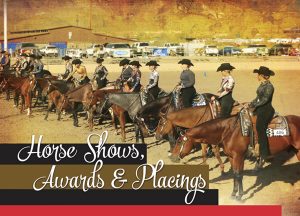Horse Show Awards Placings – A Delicate Balance Of Recognition
Click here to read the complete article
Months, if not years of work, are at stake when an exhibitor enters the arena with their horse. Are we on track with goals or ready to set new ones? In mere minutes, the judges decide. Yet, how those decisions are communicated to the masses varies greatly between shows. Some strive to celebrate accomplishments center stage for all to see. At the World Shows, Congress, and Championship shows, horses are lined up under each judge before overall placings are announced from last to first. Smaller open or weekend shows seek to maximize the fun and excitement of having placings announced in the arena. Other shows focus on efficiency, moving each class out quickly to load in the next. Most find some middle ground, balancing the need for recognition with keeping the show day a reasonable length.
There is actually a lot of thought and planning that goes into deciding how judges’ placings are announced. It’s factored into the show schedule well before the first hoof hits the ground.
Kathy Avolt is on the road months at a time running horse shows, both large and small. She notes that there is a big difference between an open show with one judge and a six-judge breed show. The components of time, facilities, manpower, and available technology can all impact how a show handles the announcement of a judge’s placings, yet providing that recognition remains important across the spectrum.
Avolt says, “We’re always walking a very fine line between keeping the show moving and providing recognition. First and foremost, we’re catering to the exhibitor who is there at the show. We want them to have time in the spotlight, but we also want to ensure they have time to get to their next class or get their next horse ready. We want to make it work for everybody. When a show goes into the later hours, exhibitors get tired. They would rather have the opportunity to school for the next day, go eat, or sleep, rather than stand to listen to every single placing.”











